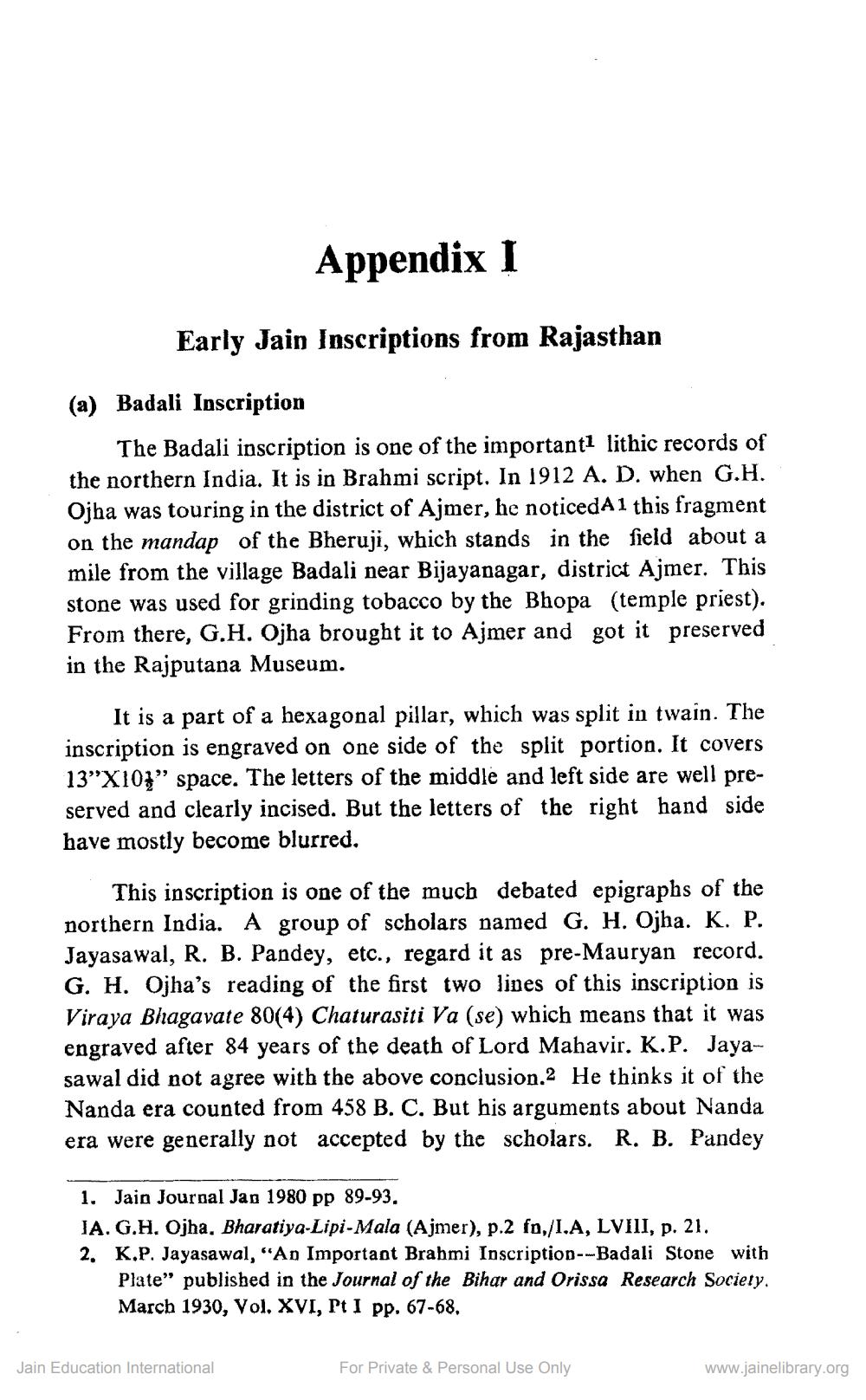________________
Appendix I
Early Jain Inscriptions from Rajasthan
(a) Badali Inscription
The Badali inscription is one of the importanti lithic records of the northern India. It is in Brahmi script. In 1912 A. D. when G.H. Ojha was touring in the district of Ajmer, he noticed A1 this fragment on the mandap of the Bheruji, which stands in the field about a mile from the village Badali near Bijayanagar, district Ajmer. This stone was used for grinding tobacco by the Bhopa (temple priest). From there, G.H. Ojha brought it to Ajmer and got it preserved in the Rajputana Museum.
It is a part of a hexagonal pillar, which was split in twain. The inscription is engraved on one side of the split portion. It covers 13”X101" space. The letters of the middle and left side are well preserved and clearly incised. But the letters of the right hand side have mostly become blurred.
This inscription is one of the much debated epigraphs of the northern India. A group of scholars named G. H. Ojha. K. P. Jayasawal, R. B. Pandey, etc., regard it as pre-Mauryan record. G. H. Ojha's reading of the first two lines of this inscription is Viraya Bhagavate 80(4) Chaturasiti Va (se) which means that it was engraved after 84 years of the death of Lord Mahavir. K.P. Jayasawal did not agree with the above conclusion.2 He thinks it of the Nanda era counted from 458 B. C. But his arguments about Nanda era were generally not accepted by the scholars. R. B. Pandey
1. Jain Journal Jan 1980 pp 89-93. JA.G.H. Ojha, Bharatiya-Lipi-Mala (Ajmer), p.2 fn,/I.A, LVIII, p. 21. 2. K.P. Jayasawal, “An Important Brahmi Inscription--Badali Stone with
Plate” published in the Journal of the Bihar and Orissa Research Society. March 1930, Vol. XVI, Pt I pp. 67-68,
Jain Education International
For Private & Personal Use Only
www.jainelibrary.org




